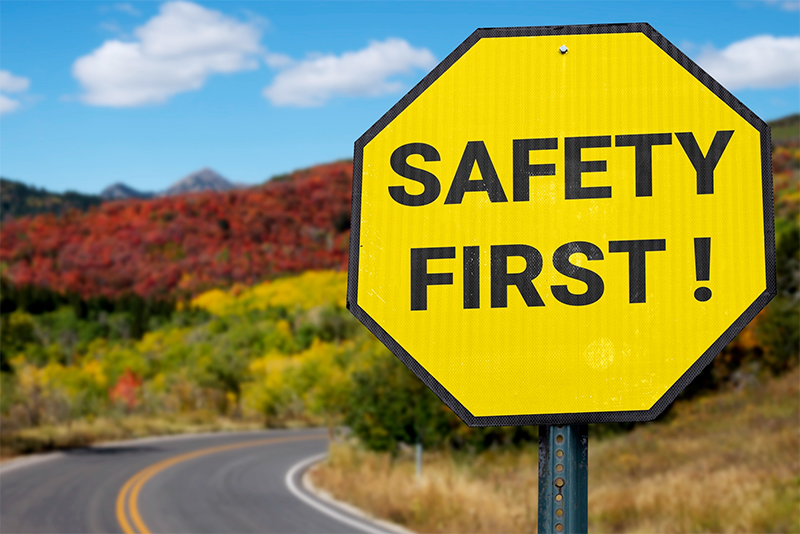Are you concerned about the rise of aggressive driving on America’s roads?
Aggressive driving can lead to road rage incidents and even fatal crashes. Implementing effective strategies to handle such situations can prevent hazardous and potentially life-threatening outcomes.
Understanding the causes and effects of aggressive driving can help you navigate challenging situations and safeguard yourself and your loved ones from these traffic offenses. Let’s explore the contributing factors of aggressive driving, the importance of addressing aggressive driving, types of aggressive driving behaviors, and more.
Definition of Aggressive Driving
According to the AAA Foundation, aggressive driving is deliberate and unsafe driving behavior performed with ill intent or disregard for safety. It includes tailgating, running red lights, weaving through traffic, changing lanes without signaling, driving on the road shoulder, road rage shooting, and more. [1]

Aggressive Driving Statistics in 2023
- Approximately 17% of drivers on American roads show aggressive driving behavior. [2]
- The most commonly observed aggressive driving behavior is changing lanes (60%) without using traffic signs. [3]
- The majority of drivers (52%) report that the most frustrating aggressive driving behavior they encounter is when another driver cuts them off and then and then slows down. [3]
Types of Aggressive Driving Behaviors
Several types of aggressive or road rage behaviors can lead to traffic violations, fatal accidents, injuries, and even fatalities. The following are the most common aggressive driving behaviors.
- Speeding: Exceeding speed limits for the given road conditions reduces reaction time and increases the chances of traffic fatalities.
- Tailgating: Following another vehicle too closely, often aggressively, can intimidate the driver in front and increase the risk of rear-end collisions.
- Weaving through Traffic: Making frequent and abrupt lane changes without signaling, and weaving in and out of traffic lanes recklessly is dangerous.
- Unsafe Passing: Passing other vehicles in unsafe conditions, such as on blind curves, hills, or double solid lines risks head-on collisions.
- Verbal or Gestural Confrontations: Engaging in aggressive verbal exchanges, shouting, using offensive language, or making obscene gestures towards fellow drivers is a common display of road rage.
- Blocking or Brake Checking: Accidents can happen when drivers intentionally obstruct other vehicles from merging, changing lanes, or slam on the brakes to intimidate the driver behind.
- Failure to Yield Right of Way: Refusing to yield to other vehicles when required leads to potentially dangerous situations at intersections or merging lanes.
- Running Red Lights or Stop Signs: Blowing stop signs endangers pedestrians and other motorists.
- Road Rage: Extreme incidents of road rage involve intentional vehicular assault, threats, physical altercations, or brandishing weapons.

Causes and Contributing Factors of Aggressive Driving
Understanding the causes and contributing factors of aggressive driving is essential in finding solutions. Let’s find out some of the key causes and contributing factors of aggressive driving:
- Traffic Congestion: Heavy traffic and gridlock often lead to frustration and impatience among angry drivers. Being stuck in traffic for prolonged periods can trigger aggressive driving behaviors like tailgating or aggressive lane changes as individuals seek ways to navigate through congestion.
- Time Pressure and Stress: Busy schedules, deadlines, and time constraints can create immense pressure on drivers, leading to stress and anxiety. It can manifest as aggressive behavior behind the wheel as individuals feel compelled to reach their destinations quickly, disregarding safety and courtesy.
- Anonymity and Disconnection: The feeling of anonymity inside a vehicle can lead to a disconnect between drivers, reducing empathy and consideration for others on the road. The perceived anonymity sometimes encourages drivers to act more aggressively than in face-to-face interactions.
- Driver’s Emotional State: Personal emotions, such as anger, frustration, personal issues, or psychological factors, can significantly impact driving behavior. Aggressive driving might stem from an individual’s emotional state, causing them to project their feelings onto others through aggressive actions on the road.
- Lack of Driver Education and Awareness: Inadequate knowledge or awareness about the consequences and dangers of aggressive driving can contribute to its prevalence. Without understanding the impact of aggressive behavior, drivers might engage in such actions unknowingly.
- Cultural and Societal Factors: Societal norms and cultural attitudes towards driving can also play a role. In environments where aggressive driving is normalized or glamorized, individuals might adopt these behaviors without fully recognizing their risks or implications.
- Competitiveness and Ego: A sense of competitiveness or ego while driving, wanting to assert dominance or control on the road, can lead to aggressive driving behaviors. It can include racing, challenging other drivers, or refusing to yield.

How to Avoid Being the Victim of Aggressive Driving
- Stay calm and do not engage with aggressive drivers.
- Avoid escalating the situation by honking, making rude gestures, or engaging in aggressive behavior.
- Leave plenty of space between your vehicle and the car in front of you can give you more reaction time in case of sudden stops or lane changes by aggressive drivers.
- Safely change lanes or pull over to allow aggressive drivers to pass and avoid a potentially dangerous confrontation.
- Obey traffic laws and do not provoke aggressive behavior by speeding, tailgating, or cutting off other drivers.
- Keeping a cool head and driving defensively can help you avoid becoming the victim of aggressive driving.
Importance of Addressing Aggressive Driving in America
Addressing aggressive driving in America holds critical significance due to its multifaceted impacts on road safety, public health, and societal well-being.
- Safety on Roads: Aggressive driving significantly heightens the risk of accidents, injuries, and fatalities. Tackling it reduces these risks, making roads safer for all users—drivers, passengers, pedestrians, and cyclists alike.
- Public Health Concerns: The consequences of aggressive driving extend beyond immediate road incidents. Road ragers can lead to stress, anxiety, and mental health issues for other drivers and passengers. Our goal in addressing aggressive driving is to reduce stress and improve mental well-being for all road users.
- Economic Impacts: Aggressive driving crashes result in substantial economic costs, including higher insurance rates, medical expenses, property damage, legal fees, and loss of productivity. Addressing it helps minimize these financial burdens on individuals, insurance companies, and society.
- Promoting Responsible Behavior: Combatting aggressive driving is part of nurturing a culture of responsible driving. It encourages individuals to adopt respectful and courteous behaviors, building a safer and more harmonious driving environment.
- Legal and Law enforcement measures: Addressing aggressive driving involves enforcing existing laws and implementing stricter measures where necessary.

Don’t let aggressive driving incidents go unaddressed.
Goldberg & Loren auto accident attorneys are here to provide the legal support and advocacy you need.
Aggressive Driving in America Infographic
Sources:
[1] Aggressive Driving – AAA Exchange. (n.d.). https://exchange.aaa.com/safety/driving-advice/aggressive-driving/
[2] Gross, A. (2023, November 29). Risky Business – More than Half of All Drivers Engage in Dangerous Behavior. AAA Newsroom. https://newsroom.aaa.com/2023/11/risky-business-more-than-half-of-all-drivers-engage-in-dangerous-behavior/
[3] Road rage Statistics. (2023). The Zebra. Retrieved January 8, 2024, from https://www.thezebra.com/resources/research/road-rage-statistics/


